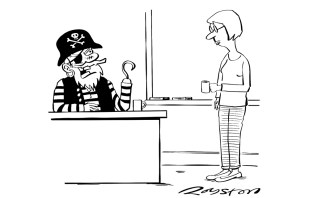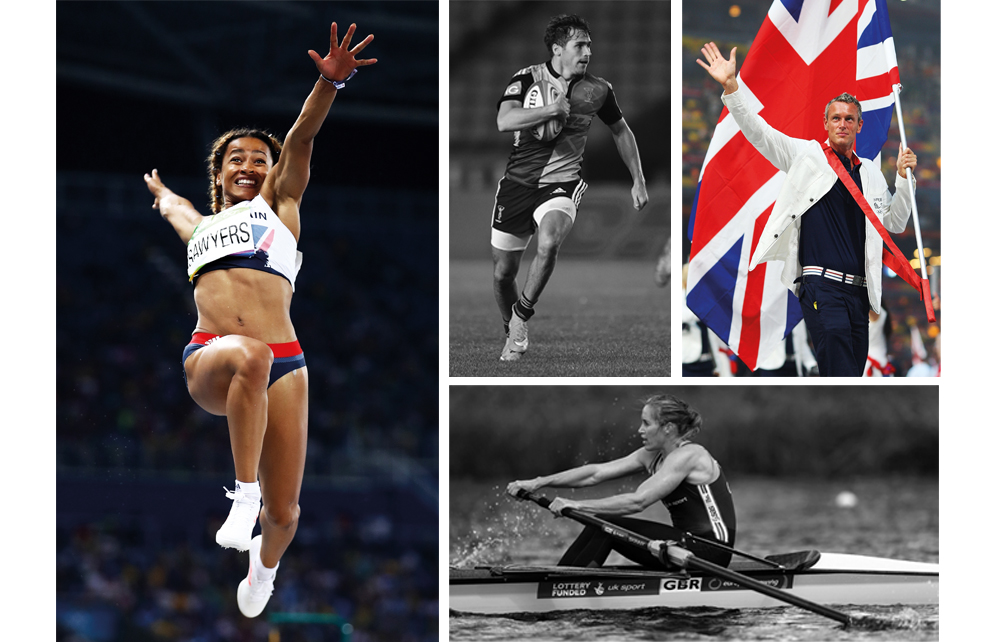There’s one safe bet at any Olympic Games: there will always be a generous handful of Millfield alumni on Team GB. At Tokyo there were 13 Old Millfieldians (OMs); in the previous Games in Rio there were eight; four years before that, on home turf, there were nine (two of whom won gold). In 2016 the tally of OMs at the Games was higher than Pakistan’s entire delegation. In 2012 they won the same number of gold medals as Canada.
What is Millfield’s secret? How did this independent boarding and day school, tucked away in an unfashionable corner of Somerset, far from the Notting Hill brigade, become a sporting powerhouse?
‘The philosophy is not about creating Olympians. It’s about creating a lifelong relationship with sport’
The obvious answer is its sprawling facilities. Millfield has an Olympic-sized swimming pool, an indoor cricket centre, stabling for 50-plus horses, a martial arts dojo, a polo field and competition trampolines. There is an online ‘Wish List’ from which generous parents can donate to an electronic starting gun for athletics (£1,999), a simulator to add to the indoor golf centre (£1,150) or perhaps a fleet of open canoes (£5,500).
Yet Millfield’s success pre-dates these goodies. It has provided Olympians for every Games since 1956, when swimming lessons were outdoors and unheated (the old pool is now the school pond). And in the context of the nationwide public-school facilities arms race, its set-up may not be the norm, but it’s certainly not the exception: a golf course and climbing wall are small fry for parents at any school charging close to £45,000 a year.
When the school’s founder, R.J.O. Meyer, known as ‘Boss’, returned from India in 1935 with seven boys, six of whom were princes, two of them had ‘word blindness’ (as dyslexia was formerly known) and good schools in Britain refused to educate them. ‘To Boss this was iniquitous, and he thought there should be a school where every child would be welcome,’ says Gavin Horgan, headmaster since 2018. ‘Part of helping them to find their brilliance would be an emphasis on sport alongside academics, so it quite quickly got a reputation for having sporty children.’ Among those early students to spread the word about the ‘Millfield method’ was Martin Attlee, son of the then deputy prime minister Clement, who joined in 1942 in the hope of overcoming his ‘word blindness’.

Nearly 90 years on from Boss’s founding vision, sport is still held in the highest esteem. The school has hotlines to the various governing bodies for sports, which means high performers are given the nod about scholarship and bursary opportunities. This ensures that as well as attracting the children of wealthy families, Millfield also spots those who have proved themselves but wouldn’t be able to afford the fees. Many former Olympians or former Olympic coaches are on the teaching staff, the latest of whom is Malcolm Brown, who trained the medal-laden triathlete Brownlee brothers. It’s this professional coaching workforce which gives Millfield the edge, says Horgan.
Then there’s the flexibility: extended lunch breaks to accommodate training (as well as the crack-of-dawn starts and after-school sessions), remote learning for the skiers who are off campus for up to six weeks, the tweaking of timetables to fit in training or playing for clubs rather than the school when needed. Add to that the onsite nutritionist, access to a psychologist, video performance analyst and numerous physiotherapists and it’s clear that sport is treated with the same rigour as maths or science.
But unlike at a specialist sports academy, parents are buying into a rounded package for their children (Millfield’s non-sporty alumni include the interior designer Sophie Ashby, author Sophie Dahl, singer Ella Eyre and former defence secretary Ben Wallace). ‘If children want to do tennis to an amazingly high standard, of course they can go to an academy in Spain and they can play tennis all the time, but they won’t get the pastoral development or the academic development,’ says Horgan, who now runs ultra-marathons but claims he’s so uncoordinated he can’t do a star jump.
Millfield makes PE compulsory until 18, because, as Horgan says: ‘The philosophy is not about creating Olympians. It’s about creating a lifelong relationship with sport for every child who comes and giving them the best possible environment to develop within. Lo and behold, if you do that, if you change your priorities, you create a low-pressure environment which allows that brilliance to come forward.’
As one old boy, now a lawyer, says: ‘There was just a culture of celebrating excellence in anything that anyone did, whether it was show jumping or squash or fencing or swimming. There was a kudos attached to people who were at the top of their game.’ As you might expect, competition is fierce. ‘The thing about Millfield is they don’t tolerate coming second,’ Peter Wilson, who won gold in the double trap shooting in London in 2012, said after his victory: ‘You are either a winner or a loser. There is no silver or bronze medal, they don’t do that. I left more competitive than ever before.’
Five-time Olympic swimmer Mark Foster agrees. ‘I don’t know whether I would have reached the success I have done coming from anywhere else,’ he has said. Similarly, Duncan Goodhew, who won a swimming gold in Moscow in 1980, has talked about being indebted to the school, which gave him a scholarship when his father died, allowing him to continue as a student.
If the power of a private education is buying into a peer group where success, ambition and opportunity are normalised, then Millfield does just that. When Olympians are your coaches and there’s a Who’s Who of Olympic alumni that have gone before you (former pupils include long-jumper Jazmin Sawyers, rugby player Ollie Lindsay-Hague and rower Helen Glover), it’s not so far-fetched to imagine that your own sporting career could come to fruition on a podium with a medal around your neck.
As for Horgan, he’ll have an eye on this year’s Games in Paris, with the final tally of OMs set to represent their countries not known until the start of the summer. ‘It’s an addictive two weeks when the business of sport suddenly becomes the thing that brings everybody together and creates a sense of competition. And that’s what we do 365 days of the year, so it’s really wonderful.’






Comments